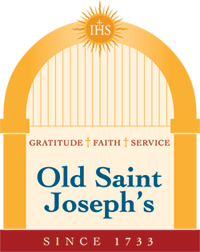War Is Not the Answer
by BJ Brown, Pastoral Associate
“The Catholic Church is like the Post Office,” I heard someone say years ago. “There’s not an inch of this country that doesn’t have a Zip Code or belong to a Catholic parish.” And because the Church in the United States is organized in territorial parishes, he was right. The Catholic Church is everywhere, all over the map.
In this election, that seems to be true politically as well: Catholics are all over the political map, and it is increasingly drawn along battlelines. There are tests of loyalty. Church officials and prominent Catholics try to command obedience. Waving like banners over the scene are slogans: ‘abortion remains our pre-eminent value’; ‘equally sacred are lives lost to racism, the environmental crisis, poverty, and the death penalty’ (both from page 6 of Forming Consciences for Faithful Citizenship, p. 6).
Perhaps it is not surprising that we bring such a dramatic, high-stakes image as moral warfare to an obligation as serious as voting, especially in this election. Voting is one way we participate in governing ourselves. The decisions we make with ballots in hand are part of our responsibility for the common good. Our votes engage our consciences, that secret core and sanctuary where the voice of God echoes in the depths of our being (Gaudium et Spes, 16).
But do battlefield metaphors really reflect how Catholics make moral decisions in good faith? To answer that question, we need to recall how the ‘unalterable words of the gospel’ and the developing traditions of our Church form and guide our consciences.
For half a century now, Scripture has been central to our Catholic experience. The Second Vatican Council and subsequent revision of our lectionary cracked the Bible wide open for Catholics. Even if we do not read Scripture that much on our own, we hear it proclaimed and preached regularly and it plays a more prominent role in the Church’s prayer and teaching.
As a result, many of us have formed our own ‘canon within a canon’ that we return to again and again. We are well-acquainted with God who creates and re-creates, who rescues a beloved if obstinate people from enslavement, who gives them both a new home and a new heart, and who commands them to care for the least among them, the ‘widows, orphans and strangers’ in their midst. We know Jesus, who heals the sick and exorcises demons with a word or a touch, who teaches the great commandment to “love the Lord your God with all your heart, and with all your soul, and with all your strength, and with all your mind; and your neighbor as yourself.” (Luke 10:25). We look forward to a final judgment when we will be separated according to our care for ‘the least of these’ (Matthew 25:31-46). It’s not that images of God as a mighty champion in battle are missing from Scripture, but they are only a small part of the story.
Just as the scripture offers us many images of God, so are the traditions, prayer and teaching of a Church that spans nearly 2000 years and the entire planet vast and varied. If we are drawn to logical thinking or order, perhaps we begin with the Catechism or the Code of Canon Law. If we are inspired by the example of holy lives, we may turn to holy women and men, both fondly remembered and formally recognized, as models for our lives. We may prefer the contemplative-in-action spirituality of an Ignatius of Loyola or the Benedictine stability of ora et labora.
Even in perilous times such as ours, the unity of the Church has not required insistence on uniformity. Instead the Church counsels us to develop the cardinal virtue of prudence, which is our ability to choose the right means to achieve the good in particular circumstances (Catechism, 1806). People of good Catholic faith share essential values and may in good conscience chose different ways of living by them.
So if wartime metaphors of loyalty, obedience, and winners imposing their will upon vanquished losers do not help us understand our moral obligations during this election year, to what other images can we turn?
That is a very hard question. Past experience shows the challenge of adopting new ways to communicate the Catholic moral vision. In the late 1980s, the late Cardinal Joseph Bernadin coined the image of a ‘seamless garment’ like the one taken from Jesus at the cross, woven in one piece in such a way that even his enemies would not tear it apart. Nevertheless, Bernadin’s opponents picked at the threads of the seamless garment until little was left but an awkward ‘consistent ethic of life’.
In this election, it may seem frivolous to dwell on the metaphors we draw on when we talk about the work of our consciences. Perhaps. But the function of a metaphor is to help us understand, to use what we know to gain insight into something that is unknown—which is exactly what we need in this moment. It has become commonplace to say that COVID-19 has wrought irrevocable change. The bandages have been stripped away, revealing what infects our country below the surface. We may no longer be in the depths of pandemic night, but we are still in the peculiar light that precedes a new day.
If war is not the answer, then what is? Turn again to Scripture; explore the Church’s traditions of teaching and prayer. Choose a metaphor that works for you, that grants insight and wisdom. Test it against your life and faith. Then pray for the courage to make deliberate moral decisions as we find our way closer to the not-yet of God’s reign.
Mass Times
Sunday at 7:30 AM, 9:30AM, 11:30 AM
Tues., Wed., & Thurs. at 12:05 PM
